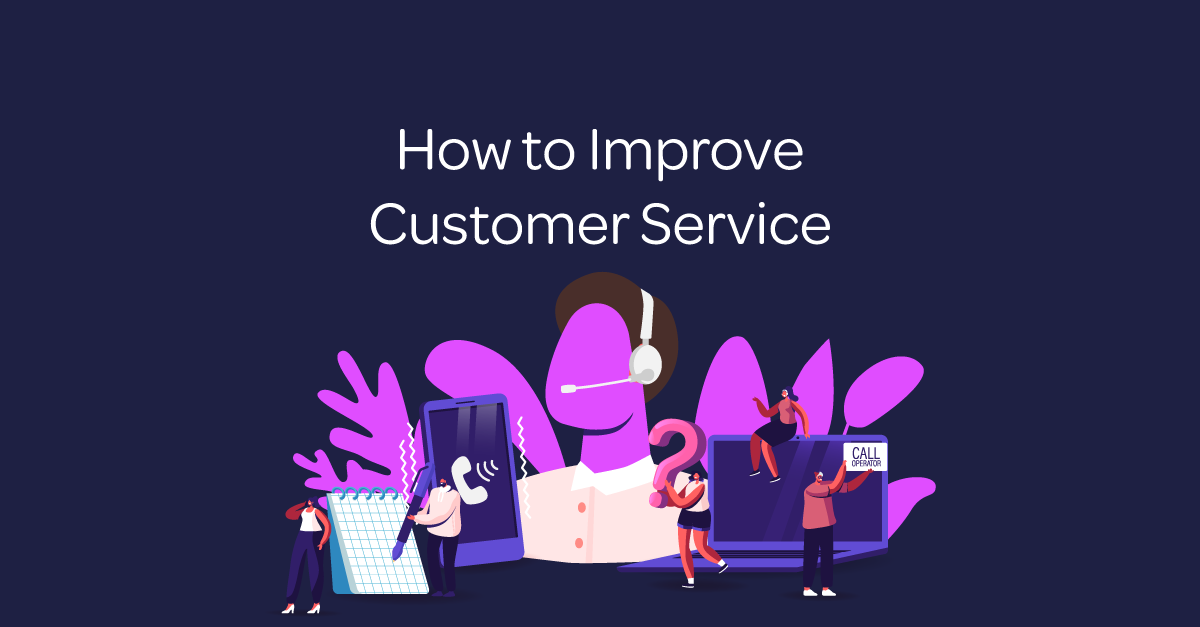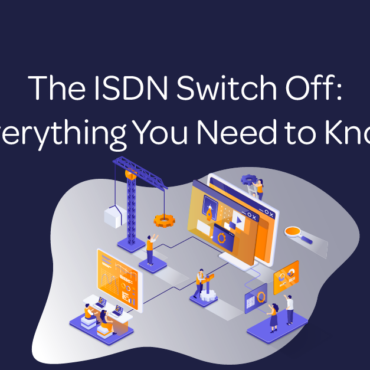Good customer service is so, so important.
Microsoft conducted a global survey in 2019 to understand how customers think. Their survey discovered that 90% of people use customer service as a factor when choosing brands. This study clearly visualises that if a brand provides good customer service, people would be more likely to pay for their products and remain loyal to them. Of course, if a brand provides bad customer service, then they would be less likely to use them – it’s simple.
1. Active listening
Arguably, the most important part of customer service is active listening. Have you ever been interested in a company that blatantly isn’t taking any notice of what you’re saying?
Active listening is when you’re totally focused on what the customer is saying; absorbing every word and responding in an engaging manner.
Here are some active listening tips that you and your customer service team should use:
- Ask clarifying questions
- Ask open-ended questions
- When the customer is talking, give verbal affirmations (“We understand.”, “Yes, absolutely.”, “We will do everything we can to fix this.”)
- At the end of the conversation, give a brief summary and provide the customer with further steps that they can take
Doing this will make a positive impression on your customers whilst showing them that you’re a brand that genuinely cares.
2. Show empathy
The next tip is very effective: show lots of empathy.
When talking to your customers, make sure to act in an empathetic manner. The key is to do it in a way that comes across as natural – not forced.
During the conversation, make sure to understand the problem or concern from the perspective of the customer. To you, it might seem small or trivial, but to them, it could be incredibly stressful.
So, let’s imagine that you’re on the phone to a customer right now. The customer is upset, angry, and confused. Here’s what you should do:
- Listen carefully (as we mentioned before)
- Let them get everything off their chest without interruption
- Use key phrases related to their personal case
- Stay positive and upbeat
- Be patient – even if the customer is talking for a long time
- Make it clear that you understand their problem and won’t be happy until it is resolved
Remember, your team should be trained to understand that customer complaints are never personal (even though it can feel like it at times). Once they understand this, they will have no problem being empathetic with customers!
3. Collect customer feedback
Nowadays, if a business wants to improve, they need to collect customer feedback. Once the feedback is collected, businesses analyse the data to find meaningful insights and trends.
In fact, according to Microsoft, brands are viewed more favourably by 77% – yep, 77% – of customers if they invite and accept customer feedback. Hopefully, this highlights just how important customer feedback is!
But this raises an important question: what are the best ways to collect customer feedback?
The great news is that there are lots of ways you can collect customer feedback, including:
- Social media surveys, polls, and Questionnaires
With over 4.48 billion people use social media worldwide, social media is now the leader of the pack when it comes to collecting customer feedback. Therefore, it’s a good start to build up your followers on Facebook, Instagram, Twitter, and LinkedIn.
- Phone calls
At the end of any phone conversation with customers, you should provide them with the option to give feedback.
- Email surveys and questionnaires
Once you build a healthy database of customer email addresses, you can send them surveys and questionnaires.
- SMS surveys
Do you know that 60% of customers read texts within 1-5 minutes of receiving them? This is incredibly exciting, as it means more than half of your customers will read your SMS surveys almost immediately.
4. Know your brand
When you provide customer service, you need to know your brand from top to bottom. This way, you can have positive (and fun) conversations with customers! If you’re confused about your products, so are your customers.
Your brand’s personality should come across through your customer service team, too. If you’re an energetic and customer-centric brand, customers should be able to feel this when talking to you. After all, branding isn’t always about the visuals (i.e. your logo and website), it’s also about your voice.
5. Throw jargon out the window!
Customers want to be understood – and you want them to understand you, too. This way, conversations can be simple and problems will be resolved quickly.
One of the best ways to ensure this happens is by throwing jargon out the window! Being transparent with what you’re saying is one of the best ways to build trust with customers and have positive engagement.
6. Have multiple customer service channels
Back in the old days (before technology exploded), you could only contact customer service by phone, by letter, or by going into a store.
However, times have changed for the better – and it’s very exciting stuff.
Now, you can provide customer service through multiple channels. Here are the main ones:
- Social media
- Live chat (through your website)
- Text messages
- Phone calls
- In-person consultations
Putting all your eggs in one basket (such as only providing customer service via social media) will definitely contain the amount of customers you will reach. Instead, it’s best to have multiple channels.
7. Personalise the customer experience
When communicating with customers, it’s important to personalise the experience. Here’s a few ways:
- Always refer to customers by their name
- Avoid robot-like communication like reading from using scripts, or seeing the customer as a number
- Make recommendations based on their purchase history and preferences
Also, make sure to build your customer profiles. This should be done by employees after speaking to individual customers. Any details and new findings should be immediately added to customer profiles so that future customer service team members can refer back to them.
8. Record customer calls
Here’s some great news: you can now record your customer calls by using a VoIP phone system.
Here are some of the benefits that come with call recording:
- Better feedback. You can listen back to calls with your employees and instruct them on what they’re doing good and what they’re doing bad. For example, one specific employee might be too abrupt when speaking to customers.
- Keep important records. A lot of important things get discussed during customer calls, from agreements to transaction details. By recording your calls, you’ll have everything on record, meaning nothing important will ever be forgotten or lost!
- Improved training. When you hire new employees, you can play them recordings of your best employees talking to customers on the phone. This way, new hires can quickly learn what is expected of them.
Also, it’s important to note that call recording is 100% legal (providing the customer gives their consent) – so you have nothing to worry about!
If you have an old and outdated phone system, you should switch to a VoIP system, instead. Not only will this improve your customer service levels, but it will also make your employees happier, too.
9. Use positive and affirming language
Positive and affirming language is important – especially when a customer is upset or frustrated.
To assure the customer, you should always begin sentences on a positive note. For example:
“Oh, that’s a really good question. Let me just check that for you…”
When customers know that they’re in good hands, it automatically puts them at ease.
10. Always follow-up
You can do follow-ups in various different ways, such as:
- Emails
- Phone calls
- Texts
- In-person appointments
Follow-ups are great, mainly because they show the customer that you care. Plus, you get to mark their case as either resolved or still open, which in turn improves your efficiency.
Our Knowledge Hub For SME Insights
Wayv Certified Carbon Neutral for Second Year
Wayv are delighted to have been certified carbon neutral by Carbon Neutral Britain for the second year running.
The ISDN Switch Off: Everything You Need to Know
ISDN stands for Integrated Services Digital Network. It is a set of communication standards for transmitting digital data…
What are the Advantages of Hot Desking?
In a traditional office model, you will be in your assigned seat, on-site, from 9-5 every weekday. With…
What Is Computer Integration?
Computer integration integrates your business phone systems by allowing employees to complete all phone-related tasks through your computer,…
Why Businesses Need Call Recording
Call recording is now a fundamental feature of business phone systems; it ensures business protection and improved performance. …
Neurodiversity in the Workplace
Diversity consultant Susan Woods, Henderson Woods, explains, “Diversity of thought is fundamental to understanding the power of diversity…
Better Bandwidth, Better Business Outcomes
In the ever-changing digital world, businesses must be able to keep up to be able to thrive in…
7 Tips to Beat Workplace Stress and Boost Wellbeing
We all know that work can sometimes be stressful. The deadlines, the pressure, and the endless to-do lists…














